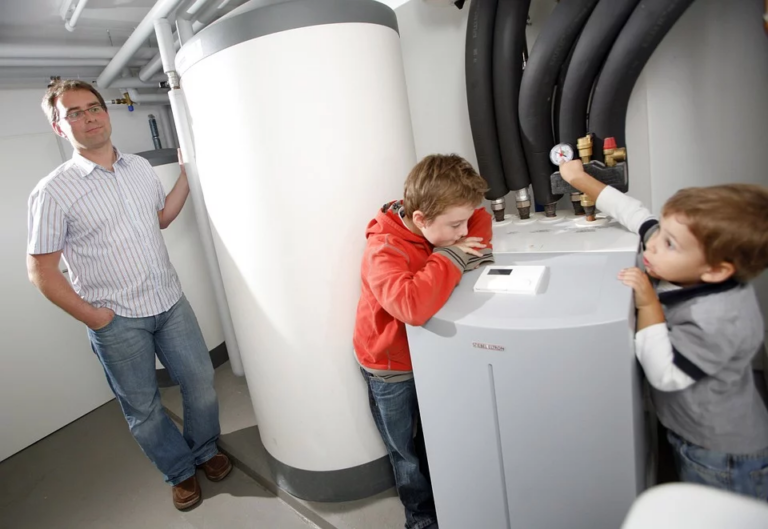Despite its reputation for being a snowy ice-land, Canada possesses a climate that not only makes us very cold but very hot as well. It’s not surprising, then, that heat pumps have become a popular heating and cooling method for Canadian homes. They work as an all-in-one home heating system and an air conditioning system by transferring heat from one place to another.
How Does a Heat Pump Work?
A heat pump transfers heat by circulating a refrigerant through a cycle of evaporation and condensation. The entire system consists of an indoor air handler and an outdoor unit (referred to as the heat pump).
Providing Heat
To provide heat, the pump extracts heat from the outside air and transfers it to a refrigerant (coolant) through a heat-exchanger coil. Once it passes to the second coil, the refrigerant is compressed and the temperature of the air is increased significantly.
The refrigerant then passes through the indoor unit which passes the air over hot coolant. This increases the temperature to accommodate the settings of your thermostat.
This cycle is reversible. To provide heat to the home, the released heat is sent back into the home through the indoor air handler. To cool the home, the heat and indoor moisture are released through the outdoor unit.
Cooling Your Home
Despite its name, a heat pump can be used to cool your home in the same way an air conditioner does. However, heat pumps do not simply blow cool air into your home. Instead, they maintain cool temperatures by removing the hot air. Just as the heat pump warms outside air and brings it into your home, it works in reverse to pull warm air from your home and release it outside.
When set to keep your home cool, refrigerant works to keep the coils of the indoor unit cold. As air gets sucked into the system and passes over the coils, it cools down and refrigerant heats up. The heat from the refrigerant is then released outside through the outdoor unit.
How to Use a Heat Pump
No two heat pumps are exactly alike and each make and model comes with its own operating steps. It is recommended that you read the manufacturer’s manual or review the operating steps with your HVAC contractor.
However, heat pumps do have some universal features such as:
- Keeping your home cool
- Keeping your home dry
- Keeping your home warm
- Air circulation
- Auto-mode to change from cool to heat automatically
Heat pumps also have fairly standard operating steps which, again, should be discussed with your HVAC contractor.
Setting the Temperature
The temperature setting on your thermostat or remote reflects the temperature near the indoor unit, not the air temperature of the entire room. You may need to set the unit’s temperature slightly higher or lower in order to find a temperature that is comfortable.
Heat pumps are designed to adjust automatically to changes in temperature in order to maintain the temperature you have set. Once you find that comfortable temperature range, leave the heat pump unit set to that temperature.
Summertime
If you are using your heat pump to keep your home cool in the summertime, it is recommended that you run the fan from time to time in order to dry any residual moisture from the condensation.
Wintertime
Heat pumps are not designed to withstand extremely cold temperatures, so it is recommended that you have a back-up heating system in your home. You can designate your oil, wood or electric heating system as a back-up to the heat pump.
Set the thermostat of your back-up heating system to 5°C below the setting of your heat pump. This way, if your heat pump cannot accommodate the extreme cold, your other heating system will kick in.
Is it Time for a Heat Pump?
If you’re interested in learning more about having a heat pump installed in your home, do not hesitate to contact our licensed HVAC technicians for more information!

